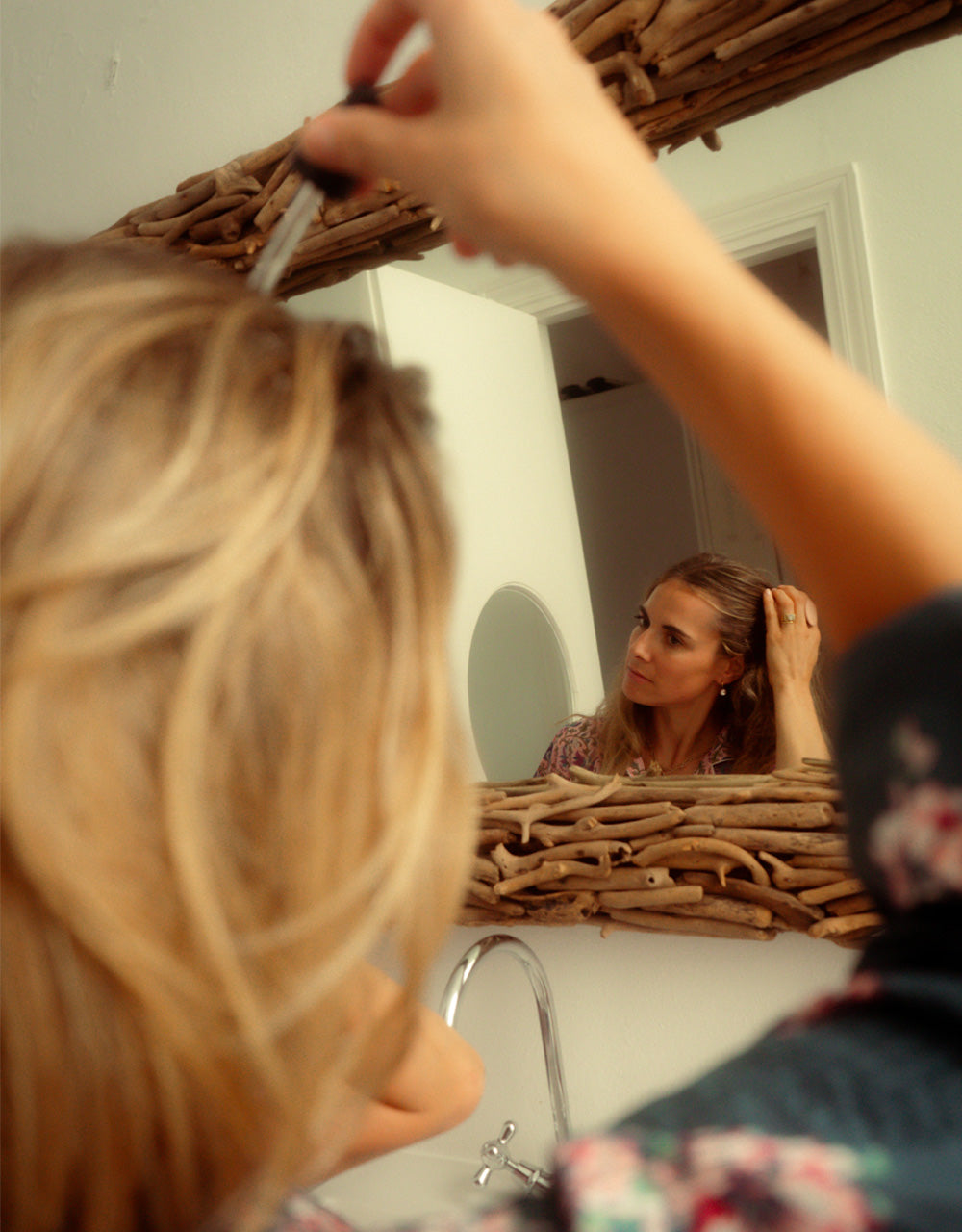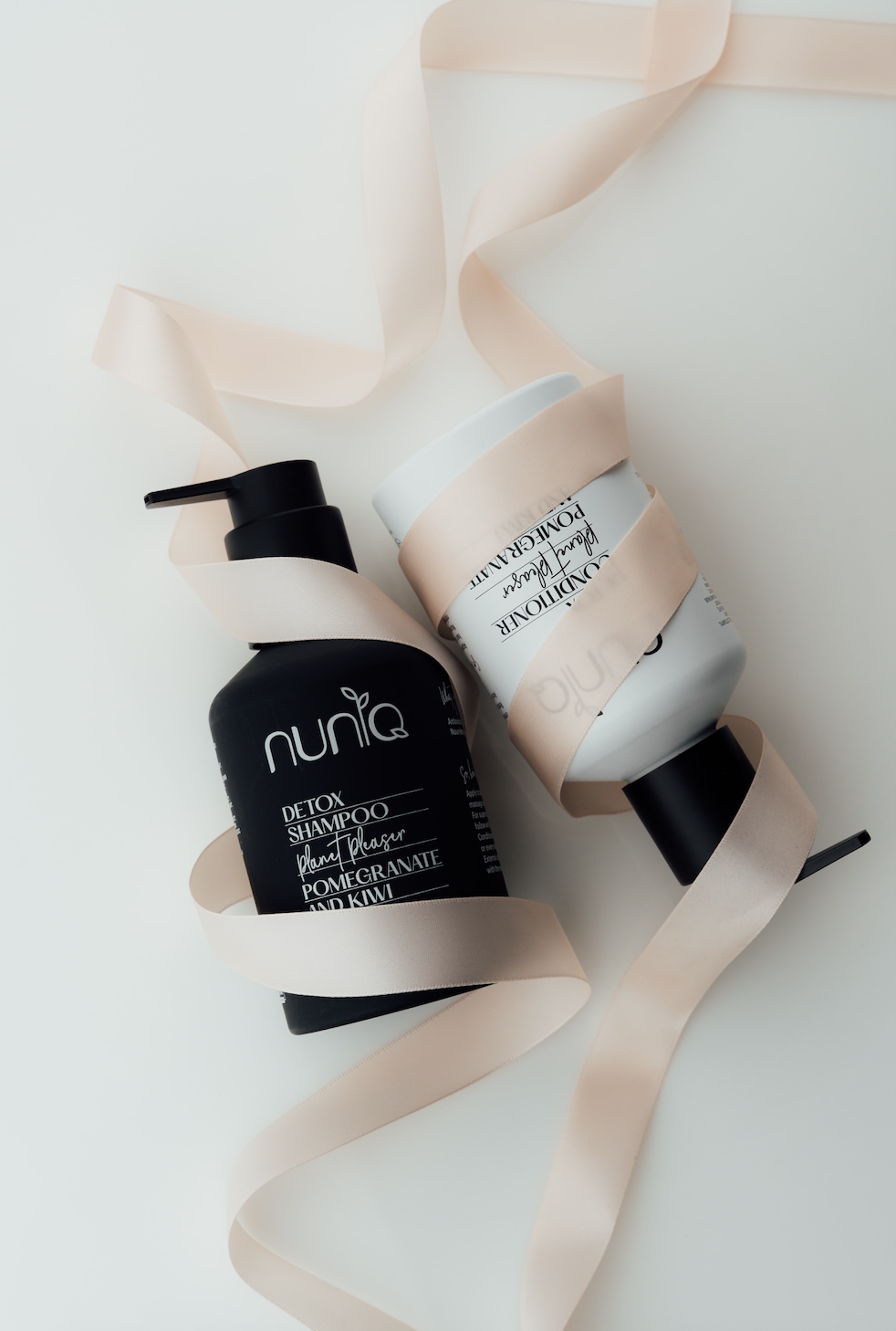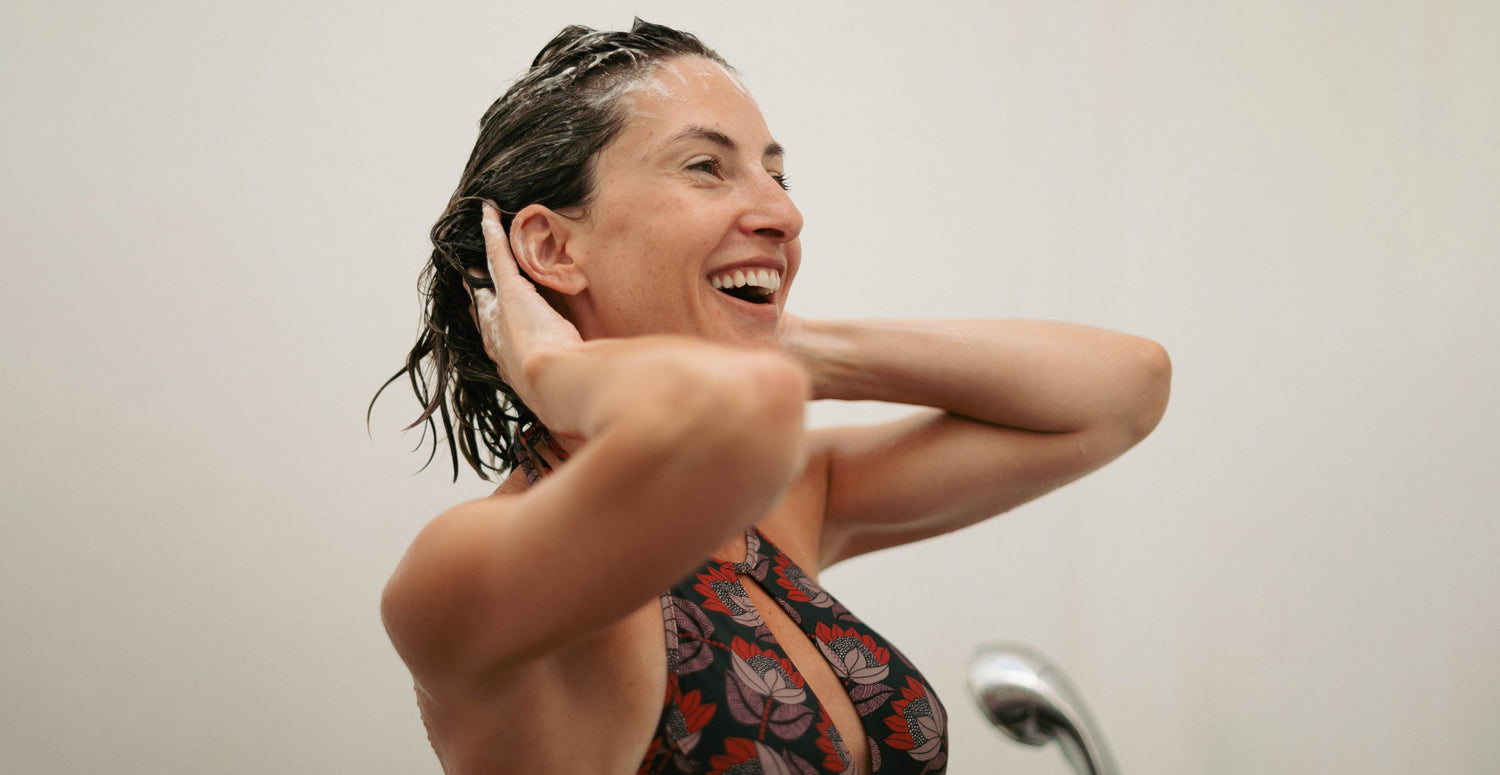Hair loss is one of those issues we all worry about at some point. You see it in the shower, on your pillow, or tangled in your brush, and you think: “Is this normal? Am I losing too much?” Spoiler: it depends.
Today we’ll walk you through what’s behind hair loss, the three key phases of the hair cycle, and how you can combat it (spoiler #2: yes, there are real solutions).
The hair cycle: The 3 key phases
Before you panic, here’s something you should know: it’s normal to lose between 40 and 100 hairs per day. Why? Because hair doesn’t grow continuously—it follows a natural cycle made up of three phases:
1. Anagen phase (growth phase)
This is when your hair is thriving. It lasts between 2 to 6 years, and about 70-85% of our hair is in this phase at any given time. The follicle is active, cells are multiplying, and your hair is growing strong.
2. Catagen phase (transition phase)
This is the short one - just 2 to 3 weeks. The follicle shrinks, stops nourishing the hair, and prepares to release it.
3. Telogen phase (rest and shedding phase)
Hair is no longer growing, and after a few months, it falls out. Around 15-30% of your hair is always in this phase. After that… the cycle starts again.
Fun fact: Each hair follicle can regenerate and go through this cycle 20 to 30 times in a lifetime.
Common types of hair loss
Not all hair loss is the same. Here are the most common types:
Seasonal hair loss
Probably the most familiar. Have you noticed more shedding in spring or fall?
It’s no coincidence.
Just like many biological cycles, hair is influenced by external factors like sunlight, temperature, and daylight hours. During winter, the scalp retains more hair. When spring arrives, more follicles shift into the telogen (shedding) phase at once, which is why it feels like “I’m losing more hair.”
Usually, this process is temporary and self-regulating.
Hair loss from stress or poor nutrition
Chronic stress or a diet lacking in vitamins and minerals (especially iron, zinc, biotin, and protein) can disrupt the hair cycle, shortening the growth (anagen) phase and pushing more hair into the telogen phase prematurely. The good news: it’s usually reversible with healthier habits.
Hormonal hair loss (Androgenetic Alopecia)
Here’s where hormones come into play. In many people, testosterone converts into DHT (dihydrotestosterone), a hormone that miniaturizes the hair follicle, weakens it, and shortens the growth phase. This affects men more, but also women, especially after menopause.
Postpartum, menopause, or illness-related hair loss
Sudden hormonal changes, certain autoimmune diseases, or medications can trigger rapid hair loss. It’s not always permanent, but it can take time to recover.
How to combat hair loss
The key is to target the cause and give your scalp what it needs to keep follicles healthy and active.
Key strategies:
- Balanced nutrition: iron, zinc, biotin, and protein are non-negotiable.
- Manage stress: cortisol plays a role in hair health - lowering it helps.
- Scalp massage: boosts circulation and promotes growth.
- Targeted active ingredients: this is where serious haircare steps in.
What does Nuniq do to help you fight hair loss?
At Nuniq, we don’t believe in empty promises - we believe in science-backed ingredients. Our Head Turner Booster is formulated with one of the most innovative and effective actives on the market: Capixyl™.
Impressive Clinical Results:
- Visible results from 4 weeks of use
- +46% hair growth after 4 months of use
- Up to 79% less hair loss compared to placebo
- Improves density, volume, and hair quality
How Does It Work?
- Stimulates hair follicle stem cells (HFSC) → regenerates the follicle and extends the growth phase (anagen).
- Inhibits DHT production → essential to reduce hormonal hair loss.
- Strengthens hair anchoring proteins (collagen, laminin) → prevents premature shedding.
- Reduces microinflammation of the scalp, improving the environment for healthy growth.
And unlike traditional treatments like Minoxidil, Capixyl™ delivers 3x more hair growth with no side effects. No irritation, no tingling, no surprises.
In fact, studies show Capixyl™ stimulates more hair growth than Minoxidil, and with faster results.
It’s also enriched with Pea Peptide to reinforce the hair shaft and pomegranate extract to soothe the scalp.
The Result?
A healthy scalp = stronger hair, more volume, less shedding.
If your hair isn’t at its best this spring, maybe it’s time to give it a real boost.
Discover our Head Turner Booster
Frequently asked questions about Head Turner Booster
Will it make my hair greasy?
No. Its water-based formula absorbs quickly without leaving any greasy residue.
Can I use it during pregnancy or breastfeeding?
Yes. Our formula contains no hormones or ingredients that are contraindicated during pregnancy or lactation.
Will I experience a rebound effect if I stop using it?
No. Since it doesn’t contain hormones or harsh agents, there’s no rebound effect. Your hair will simply return to its natural cycle.
When will I start seeing results?
Studies show visible results from 4 weeks, with more noticeable improvements at 3–4 months of consistent use.
Learn more about Head Turner Booster
View clinical studies on Capixyl™






